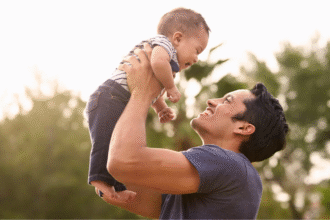Parenting is one of the most beautiful and challenging journeys in life. Every parent wants their child to grow up kind, respectful, and well-behaved. But sometimes, children push limits, throw tantrums, or behave in ways that test our patience. In those moments, it can feel tempting to yell or punish harshly — but deep down, we know there’s a better way.
Discipline doesn’t mean punishment. It means teaching. And the best discipline methods help children learn right from wrong — without fear, shame, or pain. In this article, we’ll explore positive, respectful, and effective ways to discipline your child without yelling or hitting.
Why Yelling and Hitting Don’t Work
Yelling and physical punishment may stop the behavior temporarily, but they do more harm than good in the long run. Here’s why:
- Fear-based discipline damages trust. Children start fearing their parents instead of feeling safe.
- Yelling teaches yelling. Kids mimic what they see. If you shout, they learn to shout too.
- Hitting causes emotional and physical harm. It can lower self-esteem, increase aggression, and hurt your child’s development.
- It doesn’t teach the “why.” Punishment without explanation leaves children confused about what they did wrong and how to fix it.
Instead of control, children need guidance. Instead of fear, they need connection.
1. Stay Calm: Take a Breath Before You Respond
The first step in peaceful discipline is to control your own emotions. It’s hard to teach calmly when you’re angry.
When your child misbehaves:
- Pause.
- Take a few deep breaths.
- Count to five before responding.
Remember: you are the adult. Staying calm models emotional control for your child. If you need to, walk away for a moment, and return when you’re ready.
2. Set Clear Rules and Consistent Limits
Children thrive with structure. Let them know your family rules — and stick to them.
- Be clear: “We do not hit.”
- Be consistent: Don’t allow something one day and punish it the next.
- Use simple language: “We use kind words,” “Toys stay in the playroom,” etc.
Consistency gives kids a sense of security and helps them understand what’s expected.
3. Use Natural Consequences
Instead of yelling, let actions speak.
- If your child throws a toy, take the toy away for a short time.
- If they refuse to wear a jacket, let them feel a bit cold (safely) and learn why it’s needed.
- If they spill something on purpose, they help clean it up.
Natural consequences teach responsibility better than punishment.
4. Use Time-In, Not Time-Out
Time-outs often isolate children. A time-in is a more loving approach:
- Bring your child close.
- Sit with them quietly until they calm down.
- Then talk about what happened.
Connection helps children calm faster and feel understood. Once calm, guide them with kindness.
5. Use Positive Reinforcement
Instead of focusing only on bad behavior, praise good behavior often.
- “I love how gently you played with your baby sister.”
- “You remembered to clean up — that’s awesome!”
- “Thank you for listening the first time I asked.”
Children repeat what gets attention. Celebrate their efforts.
6. Teach Problem-Solving Skills
When kids make mistakes, guide them to think and fix.
Example:
Child: “I hit him because he took my toy.”
You: “It’s okay to feel mad, but hitting hurts. What could you do instead next time?”
Role-play different scenarios, help them use words, and show how to handle tough emotions.
7. Offer Limited Choices
Children love to feel in control. Give them simple choices:
- “Do you want to brush your teeth before or after pajamas?”
- “Red shirt or blue one?”
- “Five more minutes or clean up now?”
Choices reduce power struggles and increase cooperation.
8. Empathize with Big Emotions
When kids act out, they’re often overwhelmed. Instead of reacting with anger, show empathy.
Say things like:
- “I see you’re upset. I’m here.”
- “It’s okay to feel mad, but it’s not okay to hit.”
- “Let’s take a break and talk about it.”
Emotional validation helps your child feel seen, which makes them more willing to listen.
9. Keep Age in Mind
Discipline should match your child’s age and understanding:
- Toddlers may not have self-control yet. Redirection works best.
- Preschoolers need short, simple instructions.
- Older kids can reason more. Involve them in problem-solving.
Understanding development stages helps avoid unrealistic expectations
10. Repair and Reconnect After Conflict
If you do yell or lose your temper, don’t worry — it happens.
Apologize genuinely:
“I’m sorry I shouted. I was frustrated, but I shouldn’t have yelled. I love you and we can try again.”
This teaches humility and shows how to make amends — a powerful lesson for your child.
Conclusion: Discipline with Love, Not Fear
Discipline isn’t about controlling your child — it’s about teaching them how to control themselves.
Children learn best in a calm, connected environment. When you model respect, patience, and empathy, your child learns to treat others the same way.
You don’t need to yell or hit to raise a respectful, kind, and responsible child. What you need is consistency, love, patience, and the belief that your child can learn — with your help.
FAQs
1. Is it okay to yell sometimes if my child is really misbehaving?
It’s natural to feel frustrated, but yelling can damage trust. If you do yell, apologize and try to talk calmly. Over time, use techniques like breathing or walking away before reacting.
2. What can I do if my child never listens unless I yell?
If yelling is the only time your child reacts, it’s likely because they’ve learned to respond to that. Start using firm but calm voice, natural consequences, and positive reinforcement consistently — and give it time.
3. What if I was raised with spanking — and I turned out fine?
Many people were, but research shows physical punishment increases aggression and emotional issues. Just because something was common doesn’t mean it’s best for today’s parenting.
4. How do I discipline a toddler who doesn’t understand much yet?
Use redirection, distraction, and simple “yes” or “no” statements. Toddlers need constant supervision, routine, and repetition to learn what’s right.
5. How can I teach respect without being too strict?
Respect grows through mutual understanding. Be firm with rules but kind in your delivery. Listen to your child, guide them, and lead by example.







